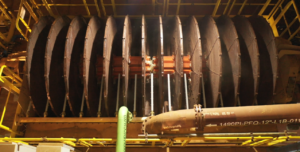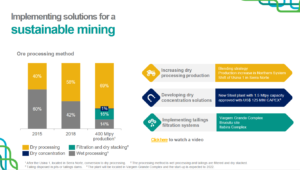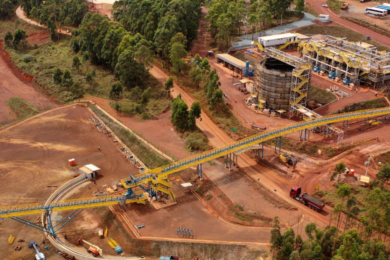Vale states that it is gradually starting up operations at its new tailings filtration plant at the Vargem Grande Complex, this being the first of four filtering plants that will be installed in Vale’s operations in Minas Gerais, totalling a US$2.3 billion investment between 2020 and 2024. In addition to reducing the need to use dams, being replaced with dry stacking, the start of operations will allow an improvement in the average quality of Vale’s product portfolio with the use of wet processing on the site.
In the filtration process, the water present in the iron ore tailings is reduced, allowing most of the material to be stacked in a solid state, thus reducing dependence on dams. Still in 2021, it is expected to start the operation of the first filtration plant in the Itabira Complex. Over the course of 2022, the second filtration plant at the Itabira Complex and the first at the Brucutu site will start operating. The four tailings filtration plants will serve processing plants that total a capacity to process 64 Mt/y of iron ore.

The addition of 4 Mt/y of capacity, as previously announced in the Production and Sales Report, on February 3, 2021, will take place from the 3rd quarter of 2021 along with the start-up of the Maravilhas III dam, which is in the final stage of construction and will receive only the ultrafine tailings from the plants, equivalent to approximately 30% of the total tailings generated from this operation. The beginning of the tailings filtration operations in Vargem Grande is another step in stabilising iron ore production and on the way to the return of the production capacity of 400 Mt/y at the end of 2022, says Vale.
The planned Vale operations mainly include thickeners and filtration plants using vacuum disc filters. In the process, the tailings go through the thickener generating a thickened slurry to be then pumped to the filtration plant. The tailings are filtered in a vacuum disc filter made of filtering cloths connected to a central vacuum system. The filtering cycle occurs as the disc rotates. When the filter is immersed in the slurry sump, the water is vacuumed up and particles accumulate in the cloth to form a cake. The filter is then removed from the sump and any liquid remaining is vacuumed up. Lastly, a jet of compressed air releases the cake and the material, now with reduced moisture, is discharged on a conveyor belt. The tailings are disposed and stacked in layers to minimise the tailings area, with the potential for revegetation.











